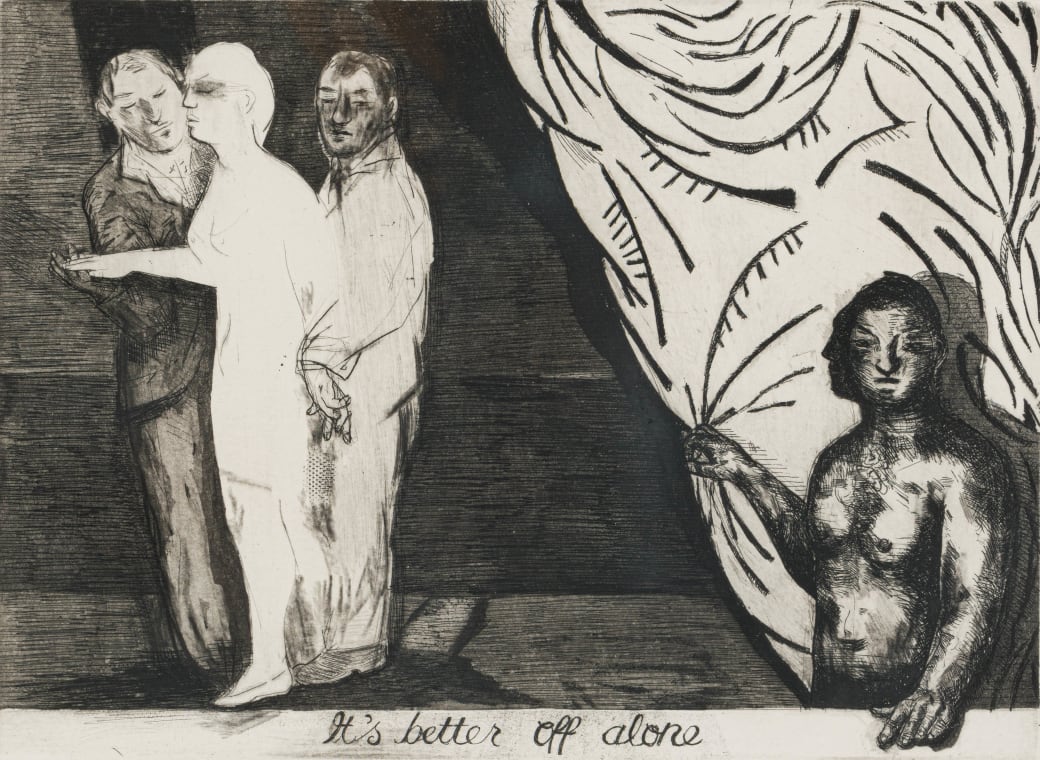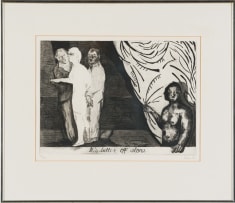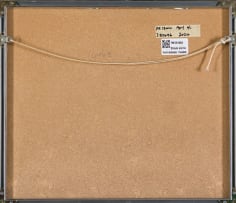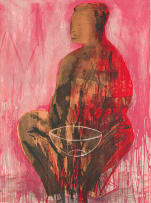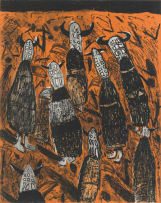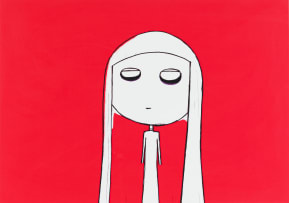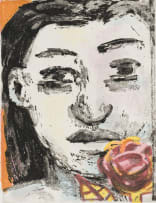April Art
Timed Online Auction, 28 March - 15 April 2024
Impression/Expression
About this Item
signed, dated 91, numbered 27/45 in pencil in the margin and embossed with The Caversham Press chopmark
Notes
The Little Morals - Deborah Bell
Unlike Hodgins and Kentridge's work on the Little Morals, my series cannot be seen to follow a specific narrative. Each image is its own 'little moral', which has to be understood poetically. The images are arrived at rather than designed. Their meaning lies in the layering of the imagery from various sources including Goya, Picasso and Babylonian relief sculpture, as well as personal references. The titles (all except for one) are based on the titles of etchings by Goya. These titles form the final layer and were chosen for the poetic resonance between image and word.
Although each image is its own story, a general theme emerged in the process of making the series, the notion of 'being witness to'. In A Last Judgement - the one title not derived from Goya - the shadow-play suggests a curate and lay-fig-ure in debate or judgement of the scene behind them. The shadows are cast by hands moving in from outside the frame, beyond the central scene portrayed and suggesting that the spectators themselves are involved in the judgement. I was trying to create an atmosphere of anxiety and despair through the troubled figures pivoting around a man, who by his gesture both arbitrates and separates, extending the notion of the Last Judgement, left and right, heaven and hell. The uneven and hesitant drypoint etching line that! employed is responsible for part of the emotional disquiet of the figures. Also, the scraping and burnishing of the plate, which occurs during the act of establishing and obliterating an image, created shadows which shift across and behind the figures, enhancing the mood.
In And this Too I brought together a number of different images like a chance coming together of events. The dancing figures (whose dancing takes on an energy close to fighting) interact with the dancing shadows behind them. Both these images derive from Goya - the shadows quite bla-tantly, while the figures have been personalised and modernised. I used the figure of a dying (murdered) lion, based on Babylonian imagery, to take on connotations of martyrdom. His stillness emphasises the exuberance of the dancers and almost acts as an accusation, suggesting that they are responsible for his fate. The shadow of the wheel continues the dancers' motion and vas chosen to suggest the inexorability and inevitability of history.
- Pippa Stein
Literature
Pippa Stein (2004) Taxi-010 Deborah Bell, Johannesburg: David Krut Publishing, another impression illustrated in black and white on page 57.
